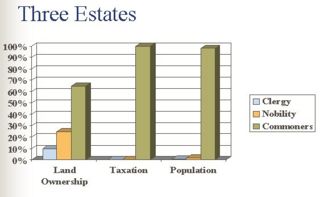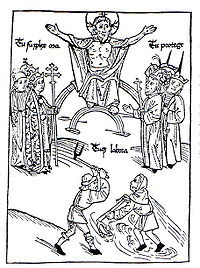 When
Carlos II died on November 1, 1700, and his will was read, France had
won. He preferred the Bourbon candidate to the Habsburg candidate.
The will stipulated that Philip of Anjou had to accept the entire
inheritance, which meant that Louis XIV would have to reject the
partition agreements. If Philip did not, then Spain and its empire
would pass to Archduke Charles. In February 1701, seventeen-years-old
King Philip V arrived in Madrid. His House of Bourbon replaced the
House of Habsburg on Spain's throne.
When
Carlos II died on November 1, 1700, and his will was read, France had
won. He preferred the Bourbon candidate to the Habsburg candidate.
The will stipulated that Philip of Anjou had to accept the entire
inheritance, which meant that Louis XIV would have to reject the
partition agreements. If Philip did not, then Spain and its empire
would pass to Archduke Charles. In February 1701, seventeen-years-old
King Philip V arrived in Madrid. His House of Bourbon replaced the
House of Habsburg on Spain's throne.
Madrid gave
enthusiastic welcome to teenaged King Philip V. The Habsburgs of
Viena had not given Spain up, and Austrian armies marched on Philip's
Italian possessions. Louis XIV provoked the English and Dutch into
war when he sent French troops into the Spanish Netherlands to secure
them for Philip. Thus erupted in 1702 the War of the Spanish
Succession, which arrayed the Grand Alliance of Emperor Leopold,
england, the Dutch, Savoy, and Portugal against Spain and France.
By the Peace of
Utrecht, Philip kept Spain and its overseas possessions. Charles VI
received Naples, Milan, Sardinia, and the Spanish Netherlands. The
duke of Savoy got Sicily. England won trading concessions in the
Spanish empire, including the lucrative African slave trade, and kept
Gibraltar and Minorca.
In 1714 Philip
reconquered Barcelona. To punish the Catalans, he stripped Catalonia
of its ancient privileges, as he had stripped Aragón and Valencia of
theirs, and went further, suppressing its universities.
Bourbon Spain was no
longer a union of crowns but had become a unified kingdom. It had its
capital in Madrid, centralized departments of government, and a
single Cortes rendered largely ceremonial. The historic kingdoms
became administrative regions and were each subdivided, giving Spain
some thirty provinces. The old organization of government by
councils, given to passing the buck among councilors, gave way to a
government of ministries, each headed by a single responsible
minister, on the French model. Not happy with centralized government,
the old grandees largely withdrew from public service, though they
maintained palaces in the capital for its social whirl. Philip and
his Bourbon successors proved generous in bestowing new titles on
their public servants an soon created a titled nobility beholden to
them.
- By the time Carlos II died, there were two candidates for the Spanish crown. Who were they? Which Royal Houses did they belong to?
- What territories did the Hapsburgs win after the war? England got some territories too. Which ones? Why did England get them?
- Philip punished Catalonia, Why and how did he do?
- Explain how the Bourbons changed the administration of the Kingdom
You can download this here





